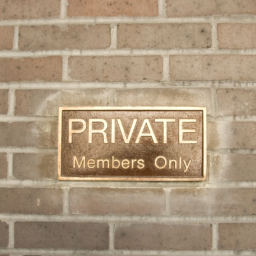
Taking accurate meeting minutes during a board meeting is a crucial and rewarding task. Board meeting minutes are more than just a summary and written records of the board’s deliberations, they also serve as an official and legal record of the meeting. Here are some steps and suggestions to get you started on drafting and compiling good meeting minutes.
What are Meeting Minutes?
Meeting minutes are written notes taken during a meeting. They emphasize the most important subjects being debated, motions being made or voted on, and actions being carried out. A chosen member of the organization normally takes the minutes of a meeting. Their job is to keep a detailed record of what happened during the meeting.
Why are the records of meetings called “minutes”?
At the beginning of the 18th century, the word “minutes” first gained use. It comes from the Latin “Minuta Scriptura,” which means “little notes,” or “minuta,” which means “tiny,” or maybe even farther back to the Latin of the 16th century, when “minute” meant “rough draft” in Latin.
Minutes from meetings must be short, as in brief. They are a distilled rendition of a meeting’s proceedings. Therefore, if you are a minute taker, spare no words. Although some meeting facilitators would be prudent to keep their meetings minute (“my-newt”) too, the phrase is not related to time, as in “seconds, minutes, hours”!
Why is it Important to Take Meeting Minutes?
Writing meeting minutes is crucial because they serve as a record of the main points discussed during a meeting. Effective minutes, for example, can explain the several techniques that were suggested to handle a certain problem, as well as the primary reasons why members chose one option over the other. Recording meeting minutes also allows you to keep track of discussions and decisions made by meeting attendees and team members who are unable to attend.
Who is the facilitator in the meeting minutes?
The task of the meeting facilitator is to ensure that the meeting flows well and covers the important agenda topics. A skilled facilitator will ensure that everyone is paying attention, following the meeting agenda, understanding their duties, and participating actively.
The success of the meeting will be ensured by a designated facilitator. When a meeting runs well, everyone sticks to the meeting agenda, is aware of their responsibilities, takes responsibility, pays attention to others, and contributes meaningfully and promptly.
Who Should Keep Track of the Meeting Minutes?
A professional note-taker, such as an assistant who attends expressly for the purpose of documenting the meeting, can take meeting minutes. In many organizations (such as governmental bodies and labor unions), the secretary is in charge of keeping minutes of meetings. If your organization or team doesn’t already have a designated function for this, we advise rotating the “note taker” duty among meeting attendees.
What Should Meeting Minutes Contain?
The meeting agenda should be included in the minutes, as well as the title of the meeting, the date, time, and location, the names of those in attendance (including staff), and the person recording the minutes.
What is meeting agenda?
An agenda is a list of the items that will be discussed during a meeting, starting with the call to order and ending with adjournment. It often involves one or more particular business matters that need to be handled. It might include particular timings for one or more activities, although it’s not necessary.
Key decisions were made on each item on the meeting agenda, including:
– Next actions have been completed or agreed upon.
– The results of the voting (the names of those who voted in favor and those who voted against should be included as well)
8 key elements of meeting minutes
- Meeting date.
- Time.
- Location.
- Participants.
- Discussion topics
- Motions.
- Results of voting.
- Next meeting date and location.
Taking Meeting Minutes – Step by Step
Step 1: Create a Template and a Process
Effective meeting minutes are aided by well-planned meetings. It is significantly simpler to take minutes if the minutes-taker works to ensure that the agenda and meeting are well-planned.
The meeting minutes process should have a strong template as well as well-documented to-dos or checklists that everyone taking minutes will be familiar with. It may be useful to create a simple, readable and organized template as we have prepared for you above. Besides, you can prepare templates and design meeting minutes via excel, Airtable or notion.
You can here access an excel template for meeting minutes.
Step 2: Taking Minutes at a Board Meeting
Unless your company requires you to take notes in a certain way during meetings, you have the option of typing them or writing them by hand. You may keep better-structured minutes by using a robust meeting minutes template. You should include the date of the meeting, the time it was called to order, the names of the meeting participants and absentees, as well as corrections and revisions to prior meeting minutes, in order to take effective minutes for a board meeting.
Step 3: Organize Your Notes
Examine the agenda to learn about the entire scope of the meeting. Notes should be added for elaboration. Check for clarity in acts, motions, votes, and decisions. Edit the minutes to make them brief, clear, and easy to read.
Step 4: Revise and Improve Your Notes
The revision step is when you polish your possibly disorganized collection of notes until they glisten like the flawless official record they’ll become. The purpose of this phase is to whittle away at your notes until just the most important, preferably actionable, elements remain. The president’s signature may also be required by your organization.
Step 5: Email Notes
The way you and your organization share or distribute information will be determined by the technologies you and your organization utilize. It’s ideal if you can employ a paperless sharing approach because minutes and other paperwork may quickly pile up.
Board Meeting Minutes Template
If you have prepared the content mentioned above, but cannot decide how to design meeting minutes, take a look at the simple meeting minutes template we have prepared for you! This template may be used to generate a formal record of the board of directors’ deliberations and decisions.
Now You Are Ready!
Meeting minutes are crucial because they record the most significant information from a meeting. You may also use Raklet, an all-in-one membership management software that allows you to send personalized emails, store personal and company information, and share newsletters, among other things!
We hope that this post will assist meeting minutes novices in getting started on writing efficient meeting minutes for their company.







